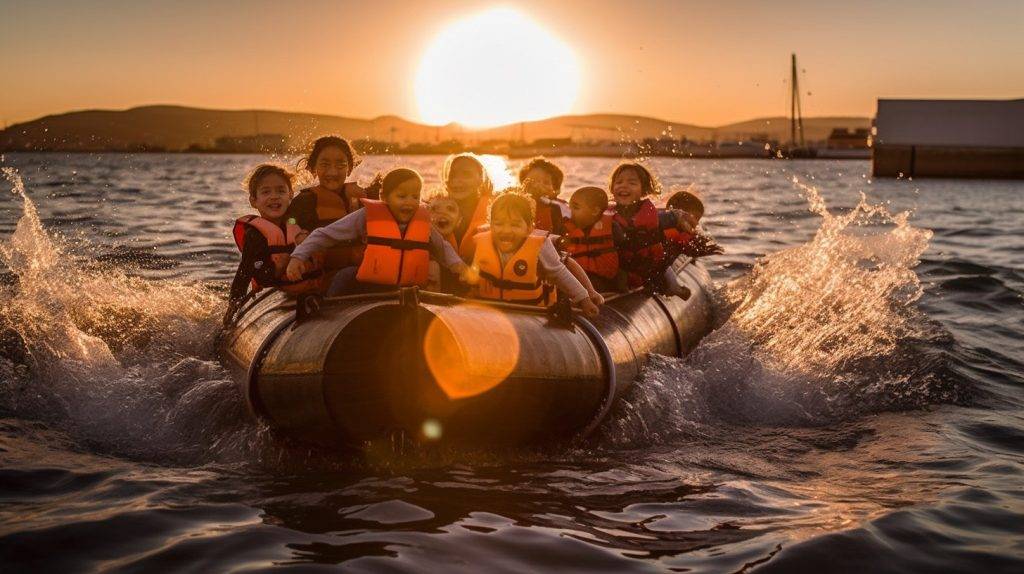
In the realm of water-based sports and recreational activities, safety is always paramount. Whether you’re a seasoned kayaker or a novice small boater, a life vest—also known as a personal flotation device (PFD)—is one piece of equipment you should never overlook. Today, we’ll delve into the fascinating world of life vests, discussing sizes, types, and the essential factors to consider when choosing one.
Before we explore the specifics, it’s crucial to understand the role life vests play in water safety. Life vests keep you afloat should you accidentally fall overboard or capsize. Regardless of how skilled a swimmer you are, the unexpected can happen, and a life vest can be a literal lifesaver.
Life vests are categorized into five different types (Type I to Type V) based on buoyancy, performance, and intended use. For kayaking and small boating, the two most commonly used are Type III and Type V.
Type III – Flotation Aids: These life vests are suitable for conscious users in calm, inland water where there’s a high chance of quick rescue. They are designed for comfort and freedom of movement, making them ideal for kayaking, canoeing, and sailing.
Type V – Special Use Devices: These are designed for specific activities like windsurfing, waterskiing, or paddlesports. When it comes to kayaking, a subtype known as the Type V PFD – Kayak Vest is often preferred due to its enhanced freedom of movement and comfort.
Remember, the selected life vest should always be approved by the U.S. Coast Guard (or equivalent authority in your country) and be appropriate for the intended activity.
Life vests come in various sizes, generally classified by weight and chest size. For children, weight is the primary determinant, with classifications often being under 30 lbs (14 kg), 30-50 lbs (14-23 kg), and 50-90 lbs (23-41 kg). For adults, chest size is crucial, typically ranging from less than 30 inches up to 52 inches and beyond.
It’s critical that your life vest fits properly. A too-big vest can slip off, and a too-small one may not provide sufficient buoyancy. Always try on your life vest and adjust the straps for a snug but comfortable fit.
Now that you understand the different types and sizes, let’s discuss what you need to consider when choosing a life vest for kayaking or small boating.
1. Activity Type: The choice of a life vest will depend heavily on your intended activity. For general recreational kayaking or small boating, a Type III PFD usually suffices. If you’re into more specialized paddling, a Type V PFD might be more appropriate.
2. Fit and Comfort: As previously mentioned, a proper fit is non-negotiable. Beyond that, comfort is crucial, especially for extended use. Look for features like adjustable straps, ventilated mesh back, or padded shoulders.
3. Visibility: Brightly colored life vests or those with reflective strips enhance visibility in the water, which can be vital in rescue situations.
4. Extra Features: Many modern life vests come with convenient features like pockets for storing small items, lash tabs for attaching gear, or a whistle for emergencies.
5. Reviews and Ratings: Lastly, don’t forget to check reviews and ratings when buying a life vest. They provide invaluable insights into the product’s quality and performance.
Selecting
the right life vest for kayaking or small boating is a decision that should be approached with care and thoughtfulness. After all, it’s not just about comfort and convenience—it’s about ensuring your safety on the water.
Remember, the type and size of the life vest should align with your intended activity and body specifications. Never compromise on a snug, secure fit, and prioritize comfort, especially for prolonged periods of wear. Opt for high visibility colors, and consider additional features that could enhance your overall water experience. And, as always, thoroughly check reviews and ratings to ensure you’re investing in a quality product.
Remember that no safety equipment can replace good judgment and a respectful approach to the power of nature. Always follow local regulations, check weather conditions, and be aware of your surroundings while kayaking or boating.
1. Can I use an inflatable life vest for kayaking or small boating?
Inflatable life vests are generally compact and comfortable. They are usually classified as Type V PFDs and should only be used by confident swimmers, as they require manual triggering for inflation.
2. How often should I replace my life vest?
Life vests don’t have a fixed expiration date, but they do wear down over time. Regularly inspect yours for signs of wear and tear, such as weakened straps or reduced buoyancy.
3. Can I use a life vest intended for a different water activity?
Each life vest type is designed for specific conditions and activities. It’s best to use a life vest that’s intended for your activity to ensure optimal safety.
Navigating the waters should be an exhilarating and joyous experience. Whether you’re a seasoned water veteran or a first-time paddler, the right life vest can make all the difference. So take your time, do your research, and choose a life vest that offers you the best blend of comfort, utility, and, most importantly, safety.
Stay safe and happy boating!
EU & Worldwide: +421 949 126 342
North America: + 1 667 309 1820
UK: + 44 1582 323992
Wavey Boats SRO
Chladna, Bratislava, Slovakia
ICO: 55 002 196
VAT Number: SK2121852073